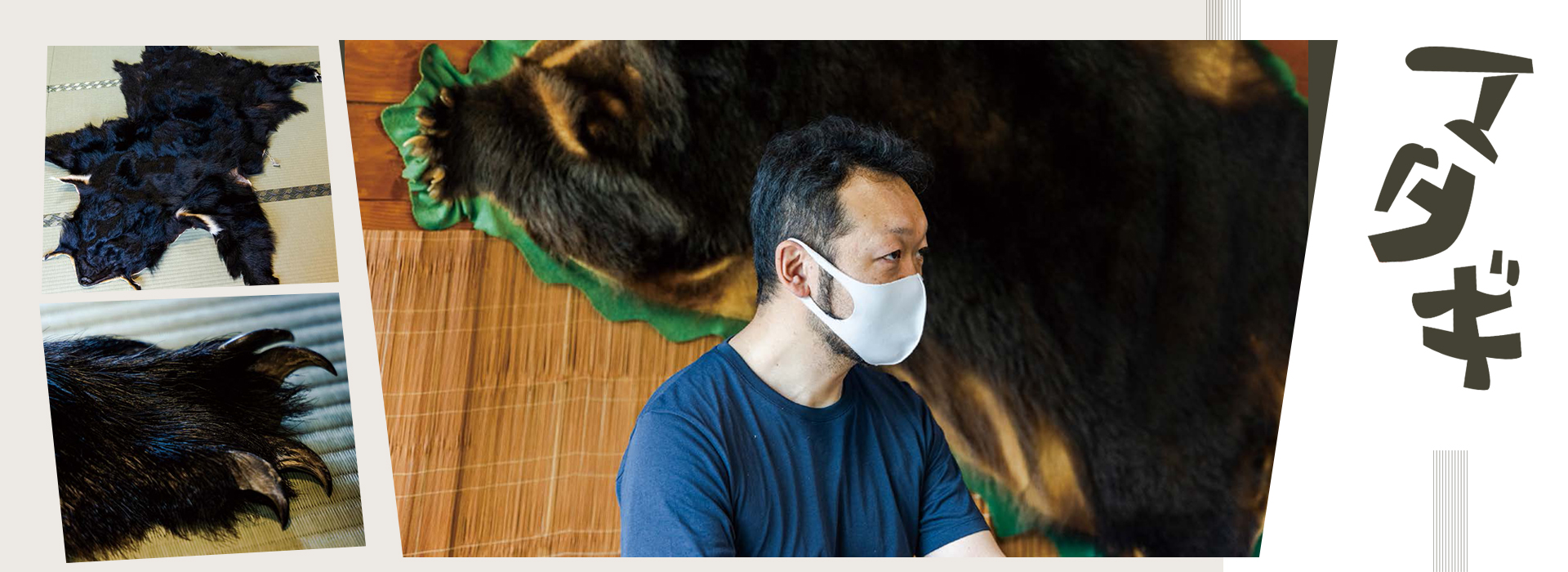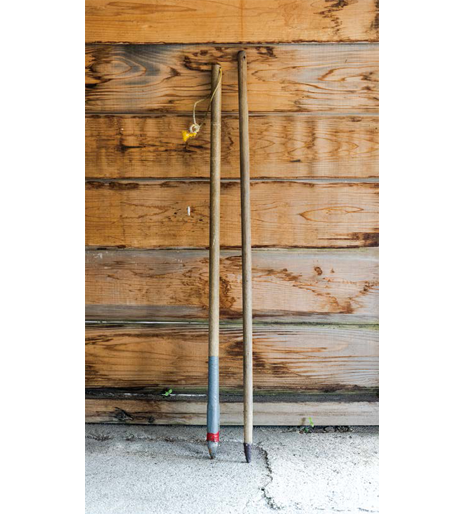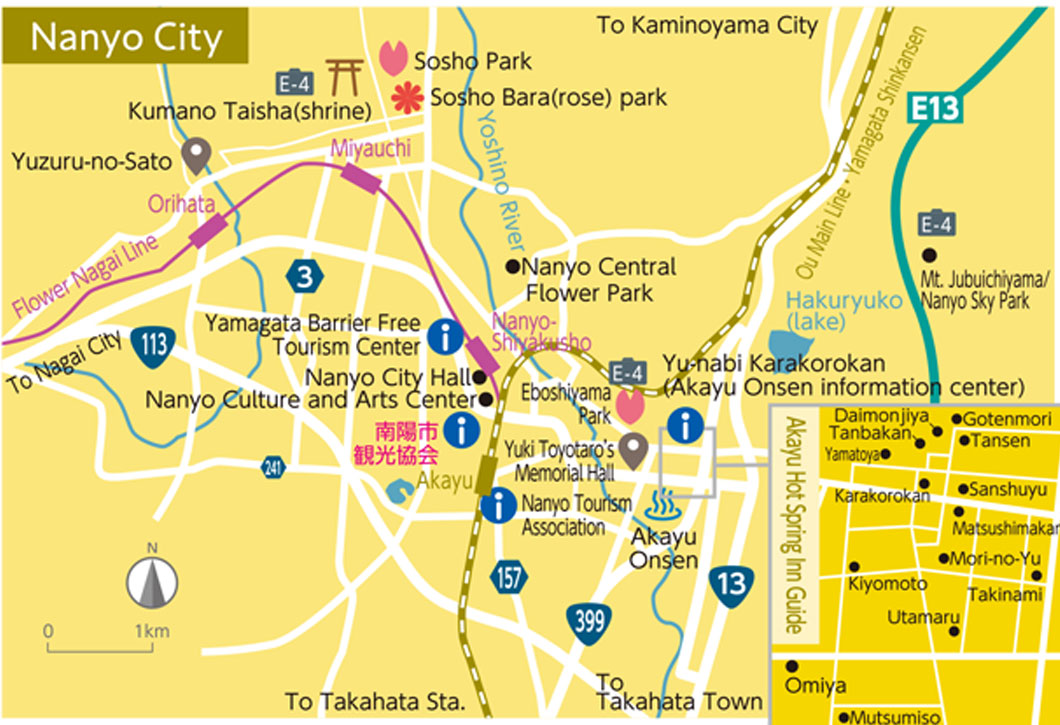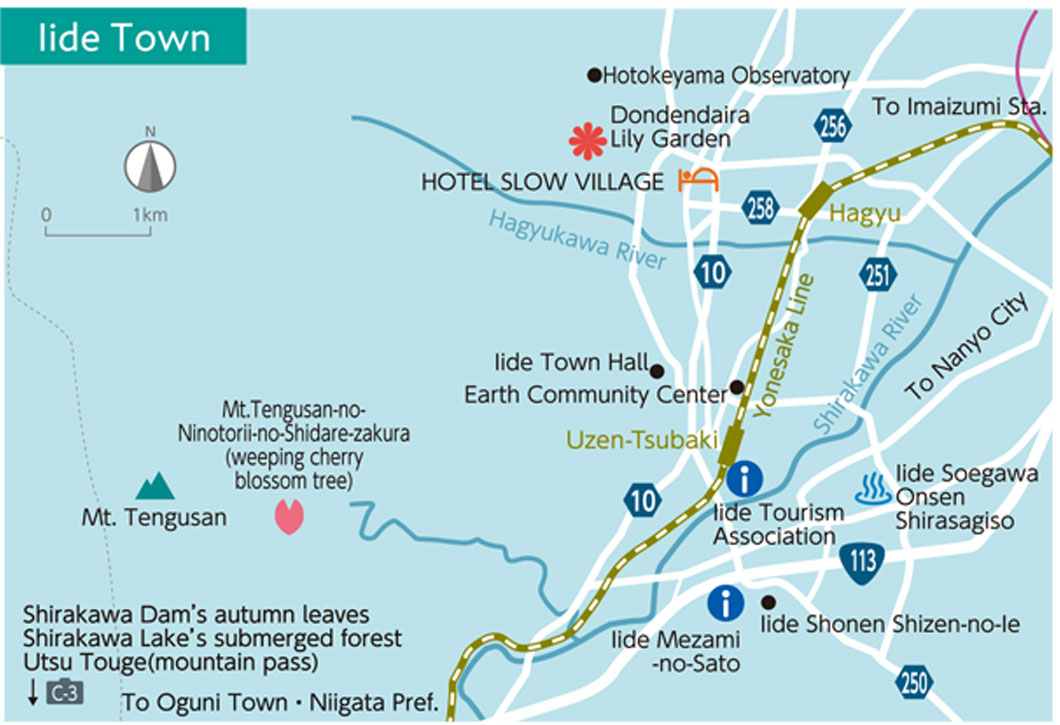
Living with Nature: Mountain People and Their Traditional Culture
The Matagi Culture of Oguni
The town of Oguni is surrounded by majestic mountains. In the north there is the Asahi Mountain range, and the Iide Mountain range in the south-west. 90 percent of the land is forest, of which 80 percent is beech forest retained from a primitive landscape. Slow growing, naturally broad-leafed white beech forests with wide-spread foliage beautifully pairs with a land of heavy snow in what is called Oguni’s “White Forest”. In our long history, there are a people who grew up in nature with Matagi culture whose livelihood is possible through hunting and gathering. At the foot of the Asahi mountains on the south side in the Gomisawa, Kaname, and Kotamagawa district, that culture is still alive.
The origin of Matagi in Oguni is not clear, but it is known that the 11 generation Matagi family, Honma Yoshihito’s family in the Kotamagawa area, was granted permission to hunt with a gun during the era of the Yonezawa Domain. It seems that Matagi has existed for more than 400 years at the longest. It is said that the “Ani Matagi” from the Ani district of Senboku region, Akita prefecture, who was active in the Tohoku area, visited Oguni and taught developed hunting techniques. Secret scrolls have been handed down from generation to generation in Matagi families or from the village leaders. It is believed that the presence or absence of that tradition indicates the legitimacy of Matagi.

Hunting Methods and Language of the Matagi
When farming began from the Jomon period to the Yayoi period, the primitive hunting lifestyle disappeared in the flatlands. But because the mountainous areas were rich with the blessings of nature, hunting and gathering methods remained. Even in the mountainous areas of Oguni, while they live in villages and farm, people hunt during the agriculture off-season of winter. They use the hunting method makigari, which is done in groups, to hunt moon bears. There are different roles: mukadate (the one who gives directions), seko (the one to rouse the bear), buppa (the one who uses the gun). However, the number of Matagi people in the area has decreased and since many of them have other work today, they go out in small groups of about 5 people.
The Matagi have a colloquial language used only in the mountains. They say “Maka/Aka” for blood, “sakinotta” for when they take down game, “sanaderu” when they take apart the kill, and “taigou” when there are people far in the mountains at about the same altitude. The expressions and origins differ depending on the region, but it is common that the Matagi language is not used in the village. It is said that this is to prevent the words of the village from being brought into the mountains because the mountain kami hate the impurities of villages.

The mountain kami is believed to be a female deity, and the matagi are forbidden to have anything to do with women for about a week before entering the mountains. Once in the mountains, they do not talk about women or even mention their names. In the past, it was so strict that some people even made their own omusubi (rice balls), but today there are no restrictions on women entering the mountains. What is forbidden is whistling, singing, and other distracting activities. Matagi climb not on well-maintained trails, but on mountain paths where slipping and falling can be deadly. They sometimes climb up steep slopes with slopes as steep as 33 degrees. When they enter the sacred area of the mountain, the matagi express their reverence for nature and pray for safety and abundant harvests by putting their hands together on the three-pronged tree where the mountain kami is said to reside.
Everything is Gifted to Us by the Mountain Kami
Religious Rituals and Shares
The downed bear is skinned and dismembered. There are different rituals for different regions. In Kaname, they bob the fur with the tail still attached above the meat and chant, “senbekitomobiki.” In the north, they place the skinned fur on the body. In Kotamagawa, when they move the skinned body to a different place, they spank the backside of the meat with the hide 2 or 3 times. In addition, they offer the head and heart facing upstream from where they got the kill to inform the mountain kami of their doing. They carve a cross into the heart in Kotamagawa, or the kanji(Chinese character) for 12 in Kaname. There is a clear difference between the Matagi, who perform rituals according to old teachings, and regular hunters. There are some hunters who take only the meat they want and throw away the rest. The Matagi take home everything aside from the waste inside the intestines, and use it for food, clothing, and medicine. They divide it up evenly among the people involved, regardless of age or role. The same amount of share will be given to anyone who couldn’t participate in the hunt, whether they were carrying luggage or being accompanied by a news researcher.
For those who depend on the blessings of nature, sometimes come into conflict, but always live together. This is the natural way of things in this world we share. The idea that not only bears, but also the wild plants and mushrooms are “gifts from the mountain god” is an unfaltering spiritual support.






